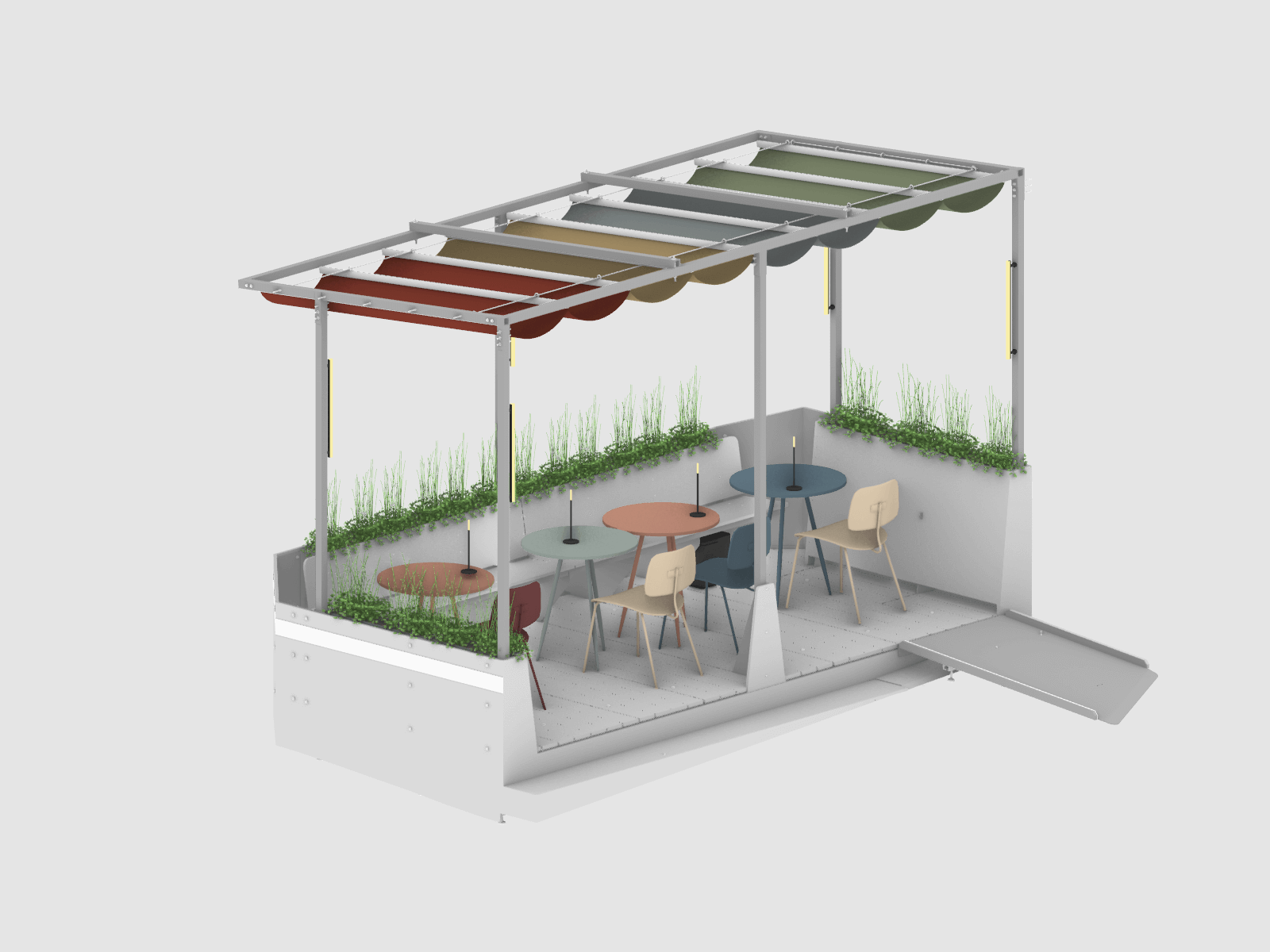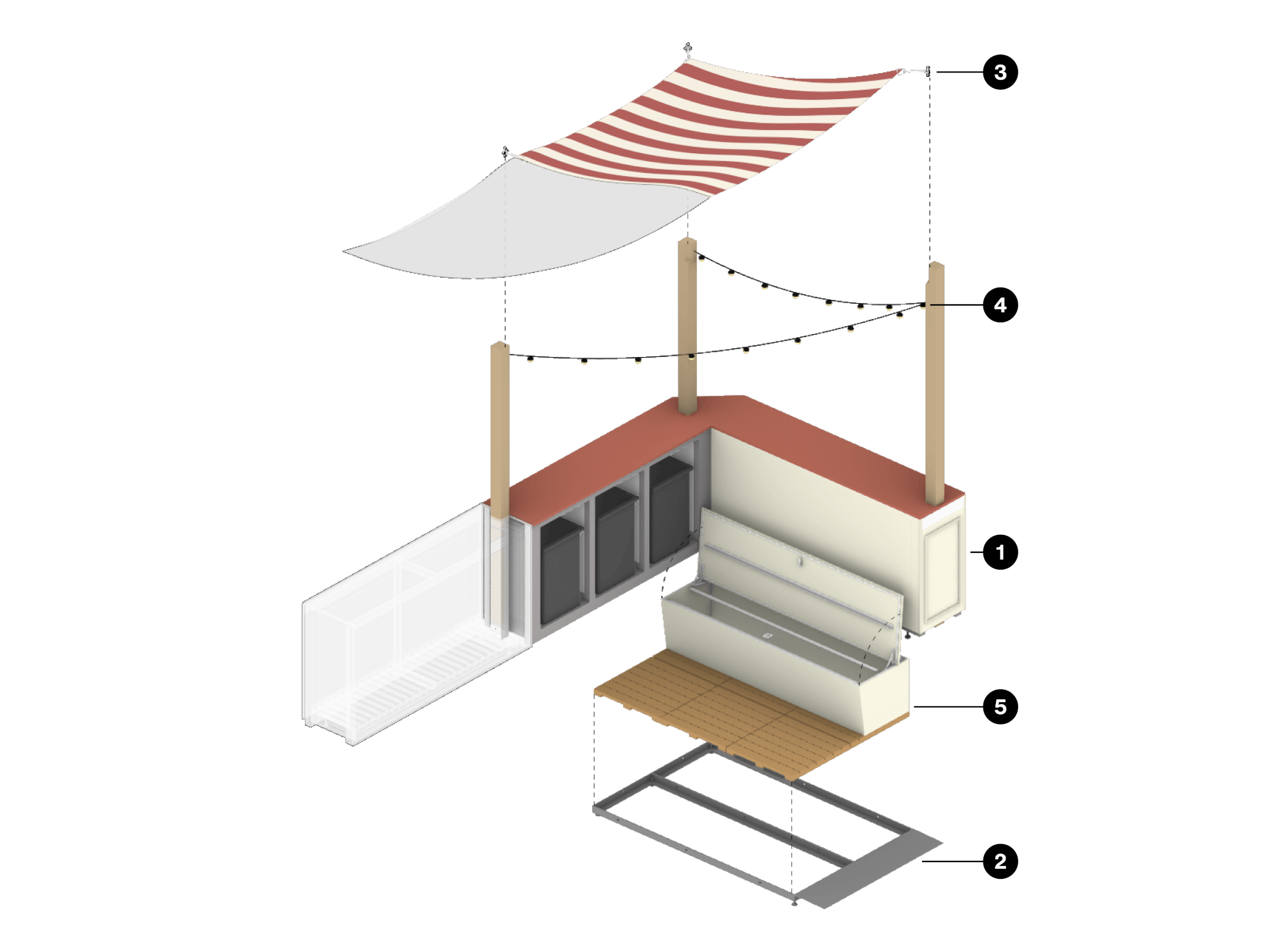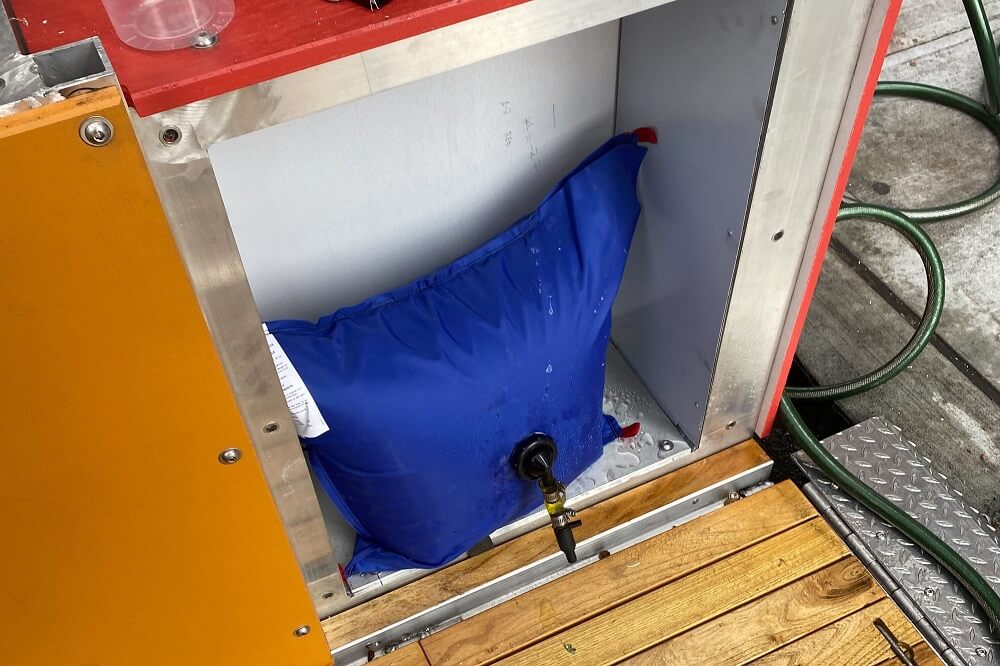At the peak of the pandemic, outdoor dining was an essential protocol that wiggled its way into the New York City streetscape. Times Square was a ghost town, and your best chance at eating out without putting your mask on in between bites was from a seat inside a wooden covered outdoor structure with tables that had (hopefully) been sanitized with Clorox. Post-CDC scares, New York’s outdoor dining scene remained as the ubiquitous “shacks” stabilized businesses and catered to those looking to enjoy food outside on a sunny, temperate day. At the peak of the pandemic Rockwell Group and WXY were among a number of firms in the Big Apple with big plans and fabrication ideas that paved the way to roadway dining. Now, new regulations laid out by Mayor Eric Adams and the Department of Transportation (DOT) as part of the program Dining Out NYC set guidelines for permanent outdoor eating setups. With applications now open for restaurants, outdoor dining may be much different due to new rules—or maybe non-existent.
Dining Out NYC mandates that roadway cafes only be available from April 1 through November 29. The shacks are also required to be demountable as they are no longer permitted for use during the winter months. A sidewalk cafe, an outdoor dining area set on the sidewalk that doesn’t interrupt pedestrian traffic, is still a viable option but a license thats costs $1,050 will now be needed. The same price applies for a roadway cafe, which is a built structure placed on the street. Restaurants can elect to have both seating types for $2,100. Restaurants with a current setup have until August 3 to apply for a permit to build a new, guideline-approved structure in order to continue operating.
After many tweaks, the DOT and the city boiled down the roadway cafe specifications to several key priorities: Shacks must be weatherproof, safe from vehicles, accessible, and demountable.

WXY and SITU were selected from a competitive Request for Proposals that was sent out to multiple architecture firms in 2023 to develop iterations for a pilot program that would (finally and officially) make the outdoor dining setups a part of the New York City streetscape.
Now with the pilot program application open for all business, the DOT released four outdoor seating examples that qualify the many requirements restaurants must follow. The four designs address different scenarios identified as commonplace in the setups for roadway cafes.
“Mid block” details a narrow restaurant frontage that may share the street with adjacent parking or other shacks. “Corner” setups brace for a high traffic corner area frequently occupied by crossing cars, people, lamps, and manholes. “Steep Street” is a demonstration designed for more residential areas where sidewalks are higher than the road and therefore need accessibility prominence. “Floating parking lane” keep in mind the bike lane and safety without compromising accessibility.

The conception and making of the outdoor dining setups took careful planning over several months. Claire Weisz, founding principal of WXY, told AN, “the idea was to take the guidelines and work with individual restaurants to see how they would best suit them.” Stationed around Manhattan and Queens, the four test prototypes were installed outside Bodrum, Warique, Dawa’s, and Sunday to Sunday.
“Whenever you’re making something. In real life, you always have to contend with a bunch of unexpected developments,” said Dillon Johnson, senior project manager at SITU, who collaborated with WXY on the pilot program. “In this project, the prototypes are not necessarily meant to be a final product that is infallible. Really, the goal in engineering multiple of them is to try out a bunch of different approaches, so that we can see how they perform.”
The current prototypes are established as weather-proof places that still cater to the guidelines. Many of them have extended roofs that span to the edge of the main structure, if not over, by a foot or two. While other setups opted for a classic aluminum waterproof idea. The sailcloth awning at Sunday to Sunday posits a fun and creative way to keep diners dry in the case of inclement weather.
Due to multiple car incidents, DOT has placed a requirement that outdoor setups must weight at least 150 pounds per linear foot. Modeled after Yodock water-filled traffic barriers, most of the setups have bladders that allow for weight distribution allowing the shacks to be car-proof as well. At the Dawa’s prototype, the setup allows for an “approved alternative” which places aluminum tensions in its floor structure designed to withstand car collisions with minimal damage.

WXY and SITU understood the importance of having these conceptual ideas be financially viable for eateries, as well as to conceive a construction process that all businesses could follow and adapt to.
“I think restaurants could probably put one of these setups out there on their own,” Johnson said. “But I think part of the message from this project is that we would encourage them to work with a design professional, work with a fabricator whether it’s us or someone else, to have something that is higher quality and is really more in line with best practices.” Considering many of New York’s outdoor dining setups are currently enclosed, changes will need to be made to follow the new rules in place for their license to go in effect.
Huseyin Ozer, owner of Bodrum Mediterranean Restaurant, told AN that outdoor dining will always be useful but now it’s up to businesses to decide whether they want to build approved structures.
“The way it’s set up now, you need a professional. It’s not something you can do yourself,” Ozer said. Previous structures around the city had their weight requirements met with soil and sand to help with car proofing, but the real difficulty is with making the setup demountable. “If DOT needs to do work on the street, and we have to take this down, the way that it is built you can take it down in a matter of two, three hours. It’s not a permanent structure like the way it was before,” Ozer shared.
The DOT website for the outdoor dining pilot program has plans for a marketplace where fabricators can collaborate with businesses and offer their services for the making of these setups. Though the program application is just in its infancy, the current guidelines still leave room for future changes as time will tell as to how regulated setups will combine with New York’s metro environment. Considering the many variables of New York City, tweaks are inevitable. Weisz added: “How do you adapt it for your own situation?”











